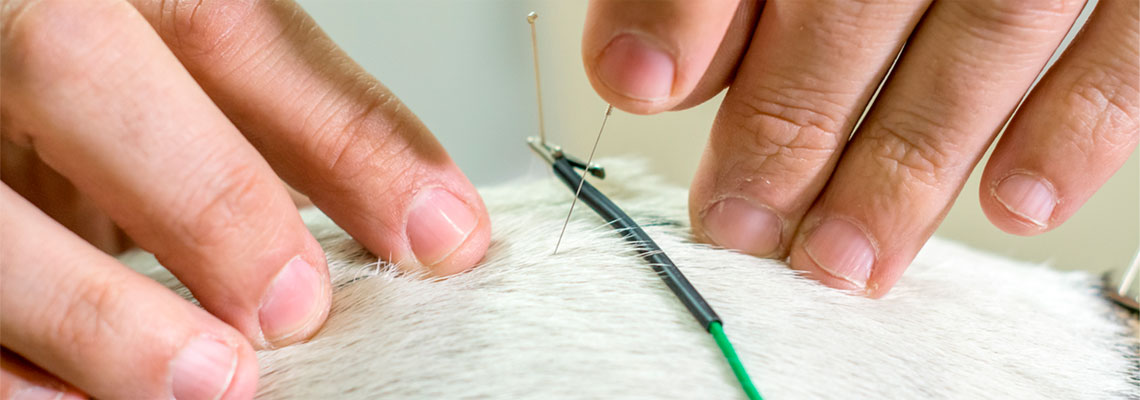

Acupuncture has evolved from the ancient art of placing needles into special locations on the body to alleviate pain, improve recovery rates and increase resistance to disease. It has been practiced by the Chinese and other Eastern cultures for thousands of years and may be used to treat a wide variety of illnesses.
Acupuncture treatment should always follow an accurate diagnosis of the problem and a full appraisal of all treatment options. In many cases acupuncture is best used in conjunction with conventional medicine however, in some situations, it can be used as a sole treatment.
Adding acupuncture to a treatment plan can help to reduce the patient’s requirements for medications which may have undesirable side effects.
Most importantly, acupuncture is extremely safe when practiced correctly and is well accepted by the majority of animals.
The Chinese approach to disease is very holistic. Emotional, hereditary and environmental factors are considered to be important elements in disease patterns. The philosophy and aim of Traditional Chinese Medicine (TCM) is to restore equilibrium between physical, emotional and spiritual factors – thus restoring and maintaining health. Treatment involves using needles in specific acupuncture points (sometimes in combination with herbal therapy) to address imbalances in Yin and Yang as well as improving the flow of Qi and blood.
Scientific research into acupuncture has made enormous progress over the past 40 years and now explains much of acupuncture’s actions which had previously only been understood in the ancient concepts of health described in Traditional Chinese Medicine.
This has brought about the greater recognition and acceptance of acupuncture within the scientific community. Early research focused mainly on pain relief and the endogenous opioid responses to acupuncture, however, further advances have revealed potent normalising effects to the hypothalamus and autonomic nervous system. This has opened the understanding of its use in all manner of internal medical disorders including respiratory, digestive, and reproductive problems. The Yin and Yang balance paradigm can now be explained by the correlations with the parasympathetic and sympathetic nervous system and this helps bring the holistic view of health back into focus.
By combining these two approaches, acupuncture may be particularly effective in the treatment of chronic disease states – either to complement orthodox treatments or when orthodox medicine fails.